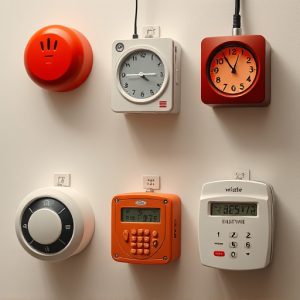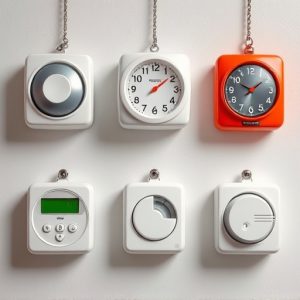Discreet Wearable Security Alarms: Protecting You with Personalized Sound Coverage
Discrete wearable security alarm systems offer portable, versatile personal protection with advanced…….
Discrete wearable security alarm systems offer portable, versatile personal protection with advanced features integrated into compact designs like wristbands or pendants. These systems allow users to easily activate a loud personal alarm sound up to 500 feet within the customizable Personal Alarm Sound Coverage Area (PASCA). Key components include a wearable alarm device and a control panel connected through wires or wireless technology. Optimal PASCA placement, fine-tuned through testing in diverse scenarios, ensures effective deterrence and quick response times. These systems are ideal for solo adventurers, travelers, or individuals living alone, providing peace of mind and enhanced security without compromising mobility or comfort.
In today’s world, personal safety is paramount. Discrete wearable security alarm systems offer a innovative solution, providing individuals with an invisible yet powerful layer of protection. This article delves into the intricacies of these advanced devices, exploring key components like sensitive alarms and durable designs. We’ll discuss how to determine optimal Personal Alarm Sound Coverage Area for maximum effectiveness and uncover diverse use cases from travel to daily commutes. Get ready to discover the perfect discreet wearable alarm tailored to your needs.
- Understanding Discrete Wearable Security Alarm Systems
- Components of a Personal Alarm System
- Determining Sound Coverage Area for Effective Protection
- Benefits and Use Cases of Discreet Wearables
- Choosing the Right Discreet Wearable Alarm for Your Needs
Understanding Discrete Wearable Security Alarm Systems
Discrete wearable security alarm systems are designed to offer personal protection with minimal impact on daily life. These innovative devices, often in the form of wristbands or pendants, integrate advanced security features into compact, discreet designs. They provide a unique solution for individuals seeking peace of mind while ensuring their safety within a defined Personal Alarm Sound Coverage Area.
Unlike traditional alarms that rely on installation and activation at fixed locations, wearable systems offer portability and versatility. Users can easily activate the alarm with a simple button press or automatic fall detection, triggering a loud siren to deter potential threats. The coverage area is customizable based on individual needs, allowing for personal adjustments to ensure comprehensive protection in various environments.
Components of a Personal Alarm System
Personal alarm systems are designed to provide individuals with a sense of security and the ability to quickly attract attention in case of an emergency. The key components of such a system typically include a portable alarm device, control panel, and a distinct personal alarm sound. The alarm device is usually worn as a lanyard or clip-on, making it easily accessible. It’s designed to emit a loud, high-pitched Personal Alarm Sound that can be heard up to 500 feet (or more, depending on the model) within the Coverage Area. This area refers to the radius in which the alarm’s signal is effective, ensuring help can be summoned promptly.
The control panel acts as the brain of the system, often placed at a central location like a bedside table or office desk. It allows users to set and disarm the alarm, with some advanced models featuring automatic arming when sensing motion or unexpected activity. These panels are linked to the alarm device via wire or wireless technology, enabling seamless operation and monitoring.
Determining Sound Coverage Area for Effective Protection
When considering a discrete wearable security alarm system, one crucial aspect is understanding and defining the desired Personal Alarm Sound Coverage Area (PASCA). This area refers to the range at which the alarm’s sound can effectively deter potential threats or summon help. Determining the optimal PASCA involves evaluating factors like environment, terrain, and intended use. For instance, in urban settings with tall buildings, sound may reflect differently, requiring a larger coverage area compared to open countryside.
Wearable alarms should be designed or positioned to ensure their sound reaches beyond the immediate vicinity of the wearer. This can involve strategic placement of the device on the body (e.g., around the neck or attached to clothing) and understanding how distance and obstructions might affect sound projection. Regular testing in various scenarios is essential to fine-tune the PASCA, ensuring maximum effectiveness in different situations.
Benefits and Use Cases of Discreet Wearables
Discreet wearable security alarm systems offer a unique blend of portability and protection, making them ideal for various personal safety scenarios. These devices are designed to be minimally invasive while still providing robust security features. One of the primary benefits is their ability to offer a personal alarm sound that can quickly attract attention and alert bystanders in case of distress, all without being overly conspicuous.
Use cases span from solo adventurers and travelers who need peace of mind during outdoor activities to individuals living alone or with increased vulnerability. Discreet wearables ensure immediate coverage area protection, triggering alerts on mobile devices or directly notifying emergency services when activated. Their small form factor allows them to be integrated seamlessly into daily routines, providing a sense of security without compromising mobility or comfort.
Choosing the Right Discreet Wearable Alarm for Your Needs
When selecting a discreet wearable security alarm, understanding your specific needs is paramount. Consider the environment in which you’ll be using it; urban settings may require a higher-pitched personal alarm sound to cut through hustle and bustle, while quieter, more natural spaces might call for a subtler tone. Similarly, the coverage area plays a vital role; some devices offer a wider range, ideal for outdoor adventures or large events, whereas others are better suited for close-knit, controlled environments.
Ensure the alarm is comfortable to wear, especially if you plan to have it on constantly. Look for adjustable straps and lightweight designs. Additional features like water resistance and long battery life can also be beneficial, depending on your activities. Ultimately, the right discreet wearable alarm will offer a balance between personal safety and seamless integration into your daily routine.
Discrete wearable security alarm systems offer a powerful, personal layer of protection in today’s world. By understanding key components like sound coverage area and choosing the right device for your needs, you can enjoy enhanced safety and peace of mind wherever you go. These innovative devices provide a discrete yet effective solution for individuals seeking an extra level of security in their daily lives.


